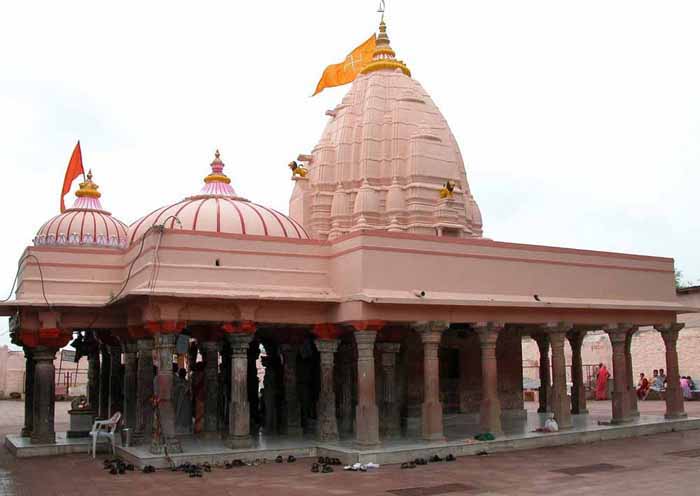Chintaman Ganesh Temple

Information of Chintaman Ganesh Temple, Ujjain, Madhya Pradesh
The Chintaman Ganesh is an ancient holy temple that is located in the Indian state of Madhya Pradesh. The temple is specifically located in the Ujjain region of the state. It is regarded as one of the biggest and the oldest temple that is situated in this particular state. Lord Ganesha is worshiped primarily in this particular temple and forms a major place for the religious tourists. It has been noted that the temple is being built in the Fatehabad railway line across the Shipra river.
Chintaman Ganesh Temple Religious Significance
As said earlier, the temple is visited by people from different parts of the country and the stat owing to the aspect that it is considered to be one of the holiest in the state. It must be mentioned that the temple is mainly a Hindu-centric one and the same can be seen from the large of Hindu pilgrims that pay visit to the temple every year. Since the temple is specifically a Ganesha temple, people take blessings from lord Ganesh with regard to conduct their activities and the start new projects or business ventures. It must be mentioned that the temple is not meant to be visited by the people other religions apart from the Hindu. Dating back to the 11th or 12th century, the temple is considered to be an extremely sacred place. This Ganesha stone temple is positioned exactly at the middle of the marketplace. The meaning of the name of the temple i.e. Chintaman is reliving the tensions. Hence, people visit the same with the intention and hope to end all their worries and problems in life from the blessings of lord Ganesha.
Chintaman Ganesh Temple Mythology & History
Owing to the rich mythological history associated with the temple, it has been learnt that it is consider as a sacred religious shrine. One of the most interesting facts about the temple is with regard to the presence of the idol within the temple. In this regard it has been learnt that the idol of Lord Ganesha within the temple was born by its own that is regarded as swayamabhu in Sanskrit. It is kwon from the Hindu mythology that lord Ganesha is the first among the lord that has been worshipped. This particular aspect also attracts large number of Hindu pilgrims from different parts of the country during the Ganesh festival. Lord Ganesha in this particular temple is referred by different names which include Vighneshwara (known as moderator of grief), flank Chintaman and Ridhhi and Siddhi, by the local people.
Chintaman Ganesh Temple Architectural Importance
Architecturally, the temple presents look and grandeur of the style of art of the 11th or 12th century. The temple was under the supervision of the Paramaras rulers during the period. One can see the finely carved pillars and sculptures within the interior and exterior of the temple which again hold resemblance with the ancient art. The white shrine within the interior of the temple shows the age-old sanctity of the structure. Within the assembly hall of the temple where people or the devotes of lord Ganesha gather has well ornamented pillars and roofs which is again quite a rare site for a structure built during the 11th or 12th century. The main gate of the temple is positioned at the northern end. The temple has been built on a larger scale with covering a considerable space. There is also a black water fountain within the temple which is still functional in the present day scenario.
- Andhra Pradesh Temples
- Assam Temples
- Bihar Temples
- New Delhi Temples
- Goa Temples
- Gujarat Temples
- Jammu and Kashmir Temples
- Karnataka Temples
- Kerala Temples
- Madhya Pradesh Temples
- Maharashtra Temples
- Odisha Temples
- Punjab Temples
- Rajasthan Temples
- Sikkim Temples
- Tamil Nadu Temples
- Telangana Temples
- Uttar Pradesh Temples
- Uttarakhand Temples
- West Bengal Temples